Ever wondered what your dog does all day while you're gone? Is there a foolproof way to keep your dog busy at home—and stop destructive boredom? If you've ever asked, "How do I keep my dog busy while I’m at work?" you're about to discover expert-backed tricks and real solutions that every dog owner needs to know!
- Signs of boredom and separation anxiety in dogs
- Step-by-step strategies to keep your dog busy and happy
- Best toys, routines, and enrichment ideas for dog owners
- How to prevent destructive behavior and give your dog peace of mind
- Pro tips from animal experts and experienced pet parents
Stressed About How to Keep Your Dog Busy While You’re at Work? Start Here
For many dog owners , leaving your pup alone while you head to work is an emotional challenge. The worry about your dog getting bored , anxious, or engaging in destructive behavior is common—and it's a question millions search for daily. If you find yourself typing "how do I keep my dog busy while I’m at work?" into Google, you’re in good company. Understanding your dog’s needs is the first step to a happier, healthier home.
Dogs thrive on mental stimulation and consistent routines, especially when they're left alone for long stretches. From pacing to chewing on furniture, signs of boredom or separation anxiety shouldn’t be ignored. By proactively planning activities and investing in the right dog toys and routines, you’ll transform your dog’s time alone from stressful to enriching.
Why ‘How do I keep my dog busy while I’m at work?’ Matters for Every Dog Owner
- Discover the signs of boredom and separation anxiety in dogs, and why proactively keeping your dog busy is essential for their well-being.
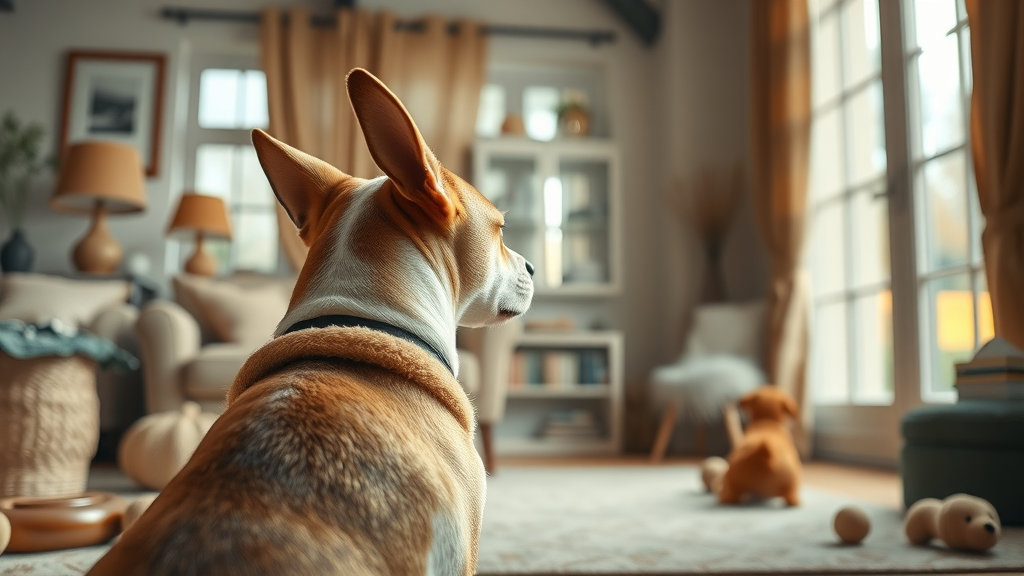
Do you ever return home to a chewed-up pillow or shredded shoe? These are clear signals of anxious dogs struggling with boredom or separation anxiety . Dogs left alone often display destructive behaviors not out of spite, but because they crave mental engagement and reassurance. In fact, a lack of structured activity or enrichment can quickly lead to stress-related habits such as excessive barking or digging.
Proactively keeping your dog busy isn't just about protecting your furniture—it's about ensuring your dog’s mental and physical well-being. Providing physical and mental activities throughout the day can help you avoid developing problem behaviors and strengthen your relationship with your pup, even while you’re away.
Hidden Risks: Ignoring Mental Stimulation When Keeping Your Dog Entertained
“A bored dog can quickly become a destructive dog. Mental stimulation is just as important as physical exercise.” – Dr. Jenna Williams, Veterinarian
Many dog owners focus on walks or chew toys for their dogs—but mental challenges are equally essential. Without mental stimulation , even the calmest pup can revert to attention-seeking or potentially hazardous behaviors. Lack of engagement has been strongly linked to both anxiety and destructive decisions, making enrichment a neurological need, not just a luxury.
Introducing puzzle toys , snuffle mats, or interactive treat dispensers can transform lonely hours into positive growth opportunities for your pup. Instead of just leaving your dog with a bowl of kibble, choose options that promote problem-solving and focus. It's a proven way to mentally stimulate and entertain your dog—even if you’re gone for most of the day.
Essential Strategies: How Do I Keep My Dog Busy While I’m at Work? (Step-By-Step Guide)
- Comprehensive breakdown of the most effective techniques for keeping your dog busy and entertained during work hours:
Keeping your dog entertained while you're away doesn’t have to be complicated. Experts recommend a mix of interactive tools, routines, and external help. Below, you'll find a detailed guide to the most effective methods, from interactive toy choices to the benefits of hiring a dog walker . Ready to upgrade your dog’s day-to-day experience?
Interactive Toys and Puzzle Toys: Mentally Stimulate and Entertain
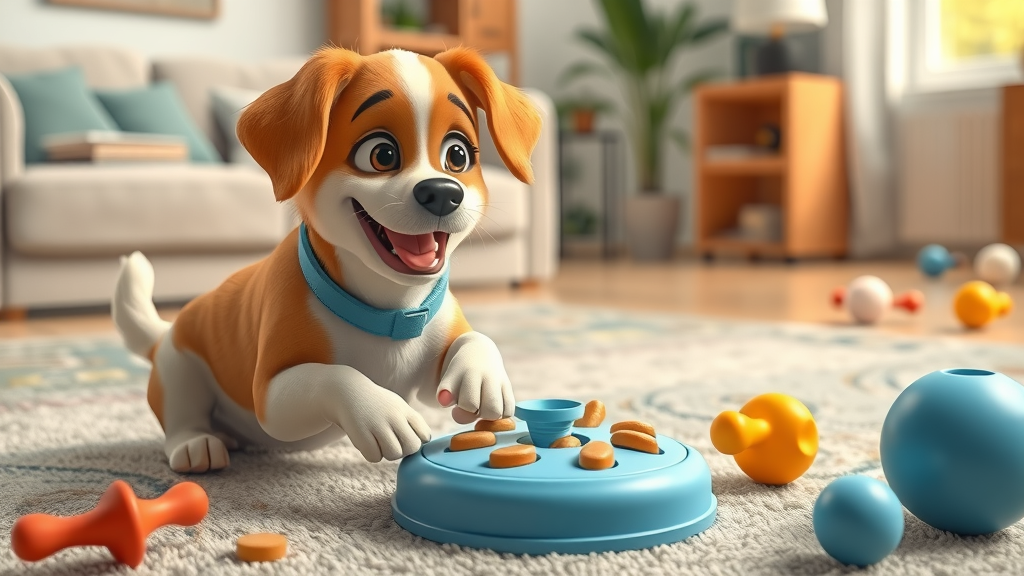
- Benefits of interactive dog toys for mental stimulation
- Best types of puzzle toys for day-time entertainment (Kong Wobbler, treat dispensers, snuffle mats)
An interactive toy is your number-one ally for keeping your dog mentally stimulated . Not all dog toys are created equal—while a regular chew toy can relieve some boredom, puzzle toys challenge your dog to think, problem-solve, and earn rewards, making solo time much more engaging. Toys like the Kong Wobbler , snuffle mats, and varied treat-dispensing puzzles can turn a boring afternoon into a fun, brain-teasing adventure.
Puzzle toys are especially beloved for providing hours of entertainment. These enrichment tools force your dog to work for their treats or food, keeping them focused and engaged. Not only do they fight boredom and reduce separation anxiety , but they also help fulfill your dog’s instincts to sniff, paw, and solve problems. For added variety, rotate different dog toys throughout the week to prevent predictability and boost excitement.
Automated Treat Dispensers & Kong Wobblers: Keep Your Dog Engaged
- Using treat dispensers to encourage independent play
- How Kong Wobbler and other puzzle toys keep your dog engaged for hours
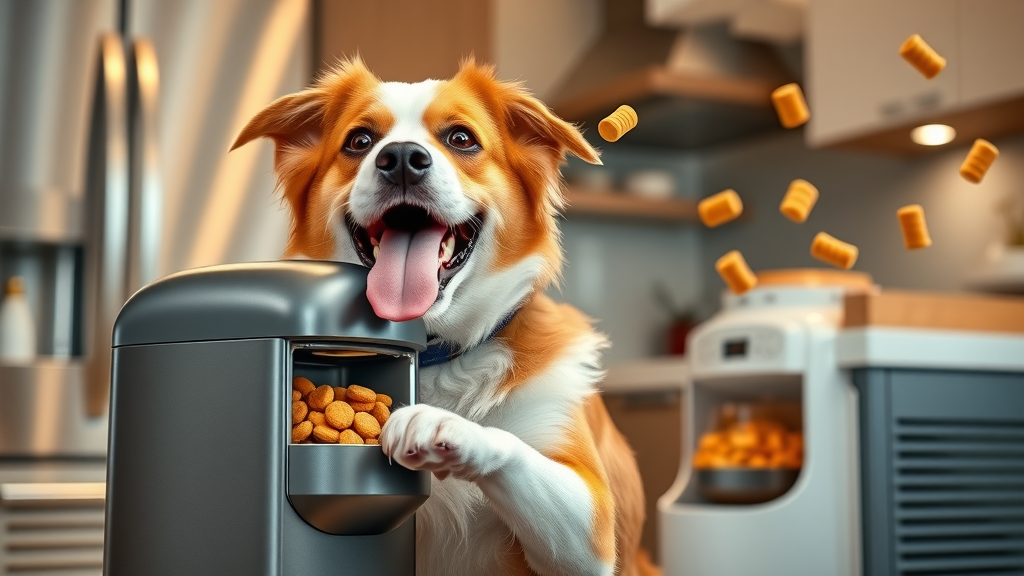
Investing in a high-quality treat dispenser or Kong Wobbler is a smart move for any busy dog owner . These tools offer your dog the chance to interact and play while you’re at work. The appeal comes from both the delicious rewards and the challenge—it’s not just about eating, but about engaging with a device, using paws and nose to “work” for the treat.
Options like the Kong Wobbler can be filled with kibble, peanut butter, or even frozen treats for longer-lasting fun. Automated treat dispensers can be programmed to release treats at scheduled intervals, creating anticipation and a sense of routine. Not only do these devices provide positive mental stimulation , but they’re a proven deterrent against destructive behavior during the workday.
Hiring a Dog Walker: Essential for Busy Dog Owners
- Advantages of professional dog walkers for breaking up long days
- Maximize health with a mid-day dog walk
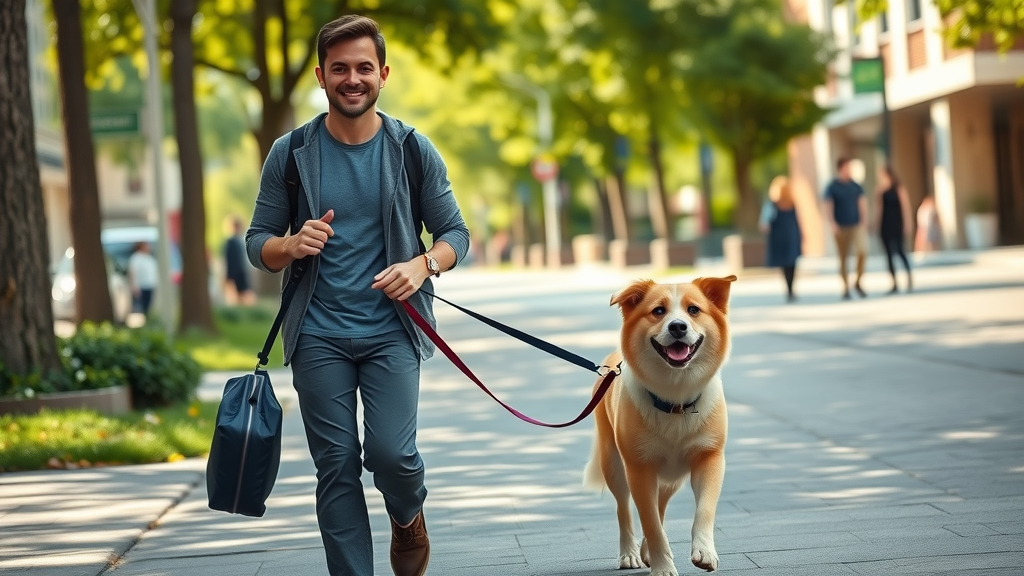
Sometimes, nothing replaces the benefits of a good walk and some fresh air. When you can’t give your dog a walk yourself, consider hiring a trusted dog walker . Professional dog walkers not only break up your dog’s day, but they also give your pet the opportunity to burn energy, socialize with others, and return home ready to relax.
Dogs are more likely to rest quietly after a mid-day adventure outside. For especially energetic breeds or dogs prone to anxious behaviors , a consistent visit from a dog walker is a real game changer. If you can’t be there to take your dog to work or out for a stroll, a regular walking routine still keeps your dog entertained, reduces stress, and ensures their physical health is prioritized.
Routine, Snuffle Mats, and Rotating Dog Toys
- How rotating dog toys and introducing new items prevent boredom
- Implementing calming routines and snuffle mats for mental enrichment
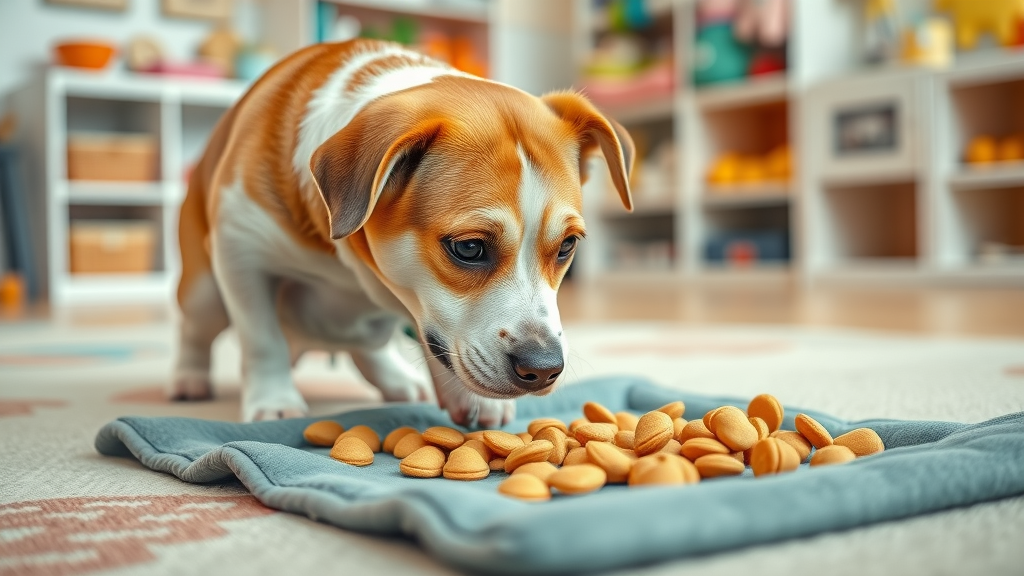
Introducing variety into your dog toys lineup is a must. Rotating toys keeps them “new” and exciting in your dog’s eyes, making each day a fresh opportunity for discovery. Enrichment routines—like bringing out a special puzzle or snuffle mat when you leave—build anticipation and motivate your dog to focus on positive behaviors rather than anxiety or destruction.
Snuffle mats in particular are gaining popularity with dog owners . These mats mimic foraging and hunting for food, giving your dog a challenge that’s fun and soothing. Mixing up routines, using interactive enrichment toys , and sticking to a schedule (like always turning on calming music or giving a new puzzle toy at a set time) can drastically reduce stress and result in a more balanced, happier dog.
Watch our step-by-step video guide to transform your home into a dog paradise while you’re at work. See practical tips for arranging cozy beds, placing dog toys strategically, and integrating enrichment tools for a safe, stimulating dog area.
Understanding & Preventing Separation Anxiety: Keep Your Dog Safe and Calm
Separation anxiety is one of the most common challenges for pet parents who work outside the home. Knowing when your dog is genuinely struggling—and how to address it—is crucial for their happiness. Preventing anxiety isn’t just about giving snacks or toys; it’s about creating a routine, offering comfort items, and layering in mental and physical engagement techniques.
From soothing background noises to snuffle mats and rotating treat dispensers , every strategy matters. With careful observation and simple adjustments, you can protect your dog from developing worrisome habits, while ensuring they enjoy peaceful, fulfilling days alone.
Spotting the Signs of Separation Anxiety and Key Solutions
- Common symptoms of separation anxiety in dogs
- Best techniques for reducing stress – from music to mental stimulation
“Routine and predictability help reassure dogs when their owners are gone – never underestimate the power of a good snuffle mat or a scheduled treat.” – Alexis Kim, Certified Dog Trainer
Watch for signals like whining, excessive barking, chewing at doors, or accidents inside—these can be signs of anxious dogs dealing with separation anxiety . It’s important to address these signs early by incorporating routines and enrichment that keep your pup both physically and mentally engaged. Calming music, low-light environments, and providing a “safe space” with their favorite toys can work wonders.
Introducing new puzzle toys before you leave for work and leaving behind a familiar, recently worn clothing item can offer comfort. When in doubt, consult a certified dog trainer if your dog’s anxiety escalates, ensuring a plan that’s truly tailored for your pet.
Peace of Mind for Dog Owners: How to Monitor Your Dog While Away
- Top dog cameras and pet monitoring tech
- Apps that help foster connection even when you’re not home

Modern dog owners can keep tabs on their pets in real time with dog cameras and smart home tech. Whether you want to check in during lunch or talk to your dog via a two-way intercom, pet cameras bring reassurance to both pet parent and pup. Look for features like motion alerts, treat tossers, and HD video streaming for ultimate peace of mind.
Additionally, mobile apps now let you schedule treats, monitor your dog’s moods, and analyze barking or movement patterns—giving you insights into your pet’s day, no matter where you are. For especially anxious dogs , seeing or hearing your voice can bring immediate comfort and reinforce a sense of routine, even during long work stretches.
People Also Ask: Common Questions about How Do I Keep My Dog Busy While I’m at Work?
How do I keep my dog entertained while I'm at work?
- Provide interactive toys and puzzle feeders
- Arrange for a dog walker or friendly visit
- Create a safe and stimulating environment
To keep your dog entertained while you're at work, blend interactive dog toys with mentally stimulating puzzles. Hire a trusted dog walker or ask a neighbor to drop by so your dog can enjoy social interaction and outdoor breaks. Designate a comfortable “dog zone” at home with a rotation of toys, calming scents, and music to create a welcoming, enriched space that thwarts boredom and anxiety.
What is the 7 7 7 rule for dogs?
- Explanation: The 7 7 7 rule reminds dog owners to devote time daily, weekly, and monthly to their dog’s mental and physical health. (7 minutes training, 7 hours companionship, 7 fun activities each week)
The 7 7 7 rule encourages dog owners to integrate three key routines: seven minutes of training daily, seven hours of close companionship each week, and seven enjoyable activities every week. This approach ensures a balanced mix of physical and mental stimulation, bonding, and enrichment—crucial for every dog’s well-being and happiness.
Can I leave my dog alone for 8 hours while I work?
- Some dogs can stay home safely with the right enrichment, but breaks, toys, and scheduled walks are crucial for their well-being.

Many dog owners need to leave their dogs alone for full work shifts. The key is to ensure access to safe, mentally stimulating toys, regular potty breaks (either through a trusted helper or dog walker), and a well-established routine. Dogs who are trained to enjoy alone time and have enrichment opportunities generally adjust well, but puppies and high-energy breeds may need greater support to avoid stress and undesirable behaviors.
What to do with my dog while I'm at work?
- Prepare a routine with interactive toys, background sound or music, timed treat dispensers, and consider hiring a pet professional for midday care.
Before you leave for work , set up a mix of enrichment activities: lay out dog toys , start a background playlist, and load up pre-timed treat dispensers . For active or young dogs, hiring a regular dog walker can provide a much-needed mid-day break and help prevent destructive behaviors . Routines, mental challenges, and caring professionals create a safe, happy environment until you return.
Must-Have Products: Dog Toys, Snuffle Mats, and Puzzle Toys for Keeping Your Dog Busy
- Expert picks for dog toys that keep your dog entertained
- How snuffle mats and puzzle toys provide all-day mental engagement
- Easy-to-clean options for busy households
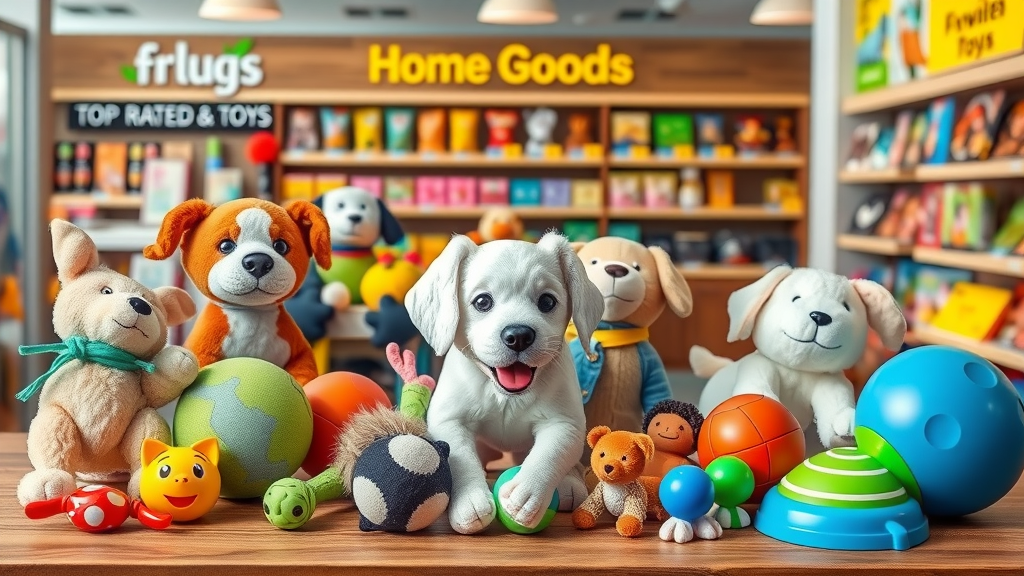
Choosing the right dog toy can be a game changer for keeping your dog entertained . Our favorites include interactive puzzles, robust chew toys , snuffle mats, and automated treat dispensers. When picking toys, look for designs made from durable, easy-to-clean materials and those that fit your dog’s chewing habits and intelligence level. By investing in a toy rotation system, busy pet parents can keep boredom at bay while ensuring every day is a little different for their furry best friend.
Snuffle mats and puzzle products like the Kong Wobbler can be left with your dog for hours of safe enjoyment. Many top products are dishwasher safe, making life easier for busy families. Offering a selection of enrichment tools optimizes your dog’s day, relieves stress, and cuts down on destructive behavior , so you come home to a happier, more content pup.
Comparison Table: Top 5 Interactive Dog Toys for Busy Dog Owners
| Dog Toy | Type | Key Benefit | Best For | Ease of Cleaning |
|---|---|---|---|---|
| Kong Wobbler | Puzzle Toy | Dispenses treats, wobbles unpredictably | Strong chewers, food-motivated dogs | Dishwasher Safe |
| Snuffle Mat | Foraging Mat | Encourages natural sniffing and hunting impulses | All ages, brain games | Machine Washable |
| Interactive Ball Launcher | Automated Toy | Provides hours of fetch fun, physically active | High-energy dogs | Wipe Clean |
| Treat-Dispensing Camera | Tech Toy | Remote monitoring and reward delivery | Separation anxiety, nervous dogs | Easy to Wipe |
| Stuffable Chew Toy | Enrichment Toy | Soothes anxious chewers, can freeze treats inside | Puppies, anxious dogs | Dishwasher Safe |
Mentally Stimulate and Entertain Your Dog: Pro Tips from Experienced Dog Owners
- Success stories and tested routines from real dog owners
- Top ideas to mentally stimulate your dog
“Switch up your dog’s toys every few days, and don’t forget the power of a challenging puzzle to keep them sharp while you’re away.” – Daniel Price, Dog Owner
Seasoned pet parents credit rotating enrichment tools as the secret sauce for lasting engagement. Mary, a busy professional and experienced dog owner , keeps a collection of treat puzzles and snuffle mats hidden in different rooms, so her dog always has a “new” discovery. Scheduling neighborhood walks, leaving TV on animal channels, or adding a programmed treat dispenser all help create the variety and mental stimulation your pet craves.
For high-anxiety or high-energy breeds, layering these toys with midday check-ins or dog walker visits can make all the difference. The right mix can keep your dog challenged, content, and ready to greet you happily—every single workday.
Video Walkthrough: Using Puzzle Toys and Treat Dispensers to Keep Your Dog Busy
Check out our exclusive video! See real demos of top-rated puzzle toys and treat dispensers in action, with commentary from trainers and dog owners.
Step-by-step setup guides make bringing new enrichment into your home easy and fun.
Frequently Asked Questions: Keeping Your Dog Entertained While You’re at Work
-
How can I help my senior dog stay busy at home?
Focus on gentler enrichment options like soft puzzle mats, slow-feeder bowls, and comfort-centric dog toys . Incorporate calm music and softer routines but don’t skip on mental engagement. -
Are there safety concerns with leaving my dog home alone?
Always dog-proof your space: remove potential choking hazards and ensure only safe toys are left accessible. Cameras can help monitor activity and alert you to unusual behavior. -
What’s the best way to calm a dog with separation anxiety?
Establish a predictable routine, use soothing background noise, rotate puzzle or treat toys, and consider comforting items with your scent. In persistent cases, seek a trainer or veterinary advice.
Key Points for Dog Owners: How Do I Keep My Dog Busy While I’m at Work?
- Know the value of both mental and physical stimulation
- Mix up play routines for a happier, less anxious dog
- Invest in interactive, engaging dog toys and tools
Take the Next Step: Peace of Mind for Keeping Your Dog Busy, Healthy & Happy
- Want expert advice, trending products, and must-know health tips for your pet? 📬 Join our free monthly newsletter — made for pet lovers, by pet lovers.
Actionable Next Steps: Rotate toys, schedule a daily enrichment routine, and experiment with interactive tech. Your dog will thank you for it—every day you’re at work!
To further enhance your understanding of keeping your dog engaged while you’re at work, consider exploring these resources:
-
“17 Ways to Entertain Your Dog When You’re at Work” ( thedogbakery.com )
-
“11 Ways To Entertain Your Dog While You’re At Work” ( iheartdogs.com )
These articles provide a variety of strategies and tools to ensure your dog remains happy and stimulated during your absence.
 Add Row
Add Row  Add
Add 



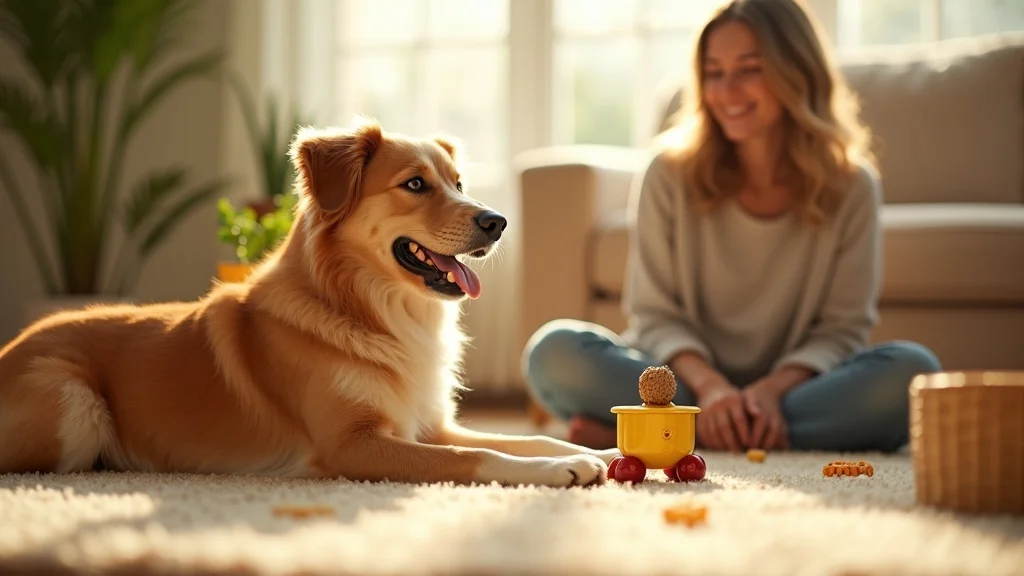
Write A Comment